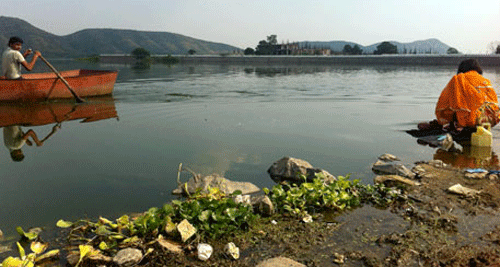Udaipur fails miserably in Swachh Bharat ranking
The authorities and the citizens have hung their heads in shame after the release of the Swachh Bharat ranking of municipal areas of Udaipur.

The authorities and the citizens have hung their heads in shame after the release of the Swachh Bharat ranking of municipal areas of Udaipur.
Udaipur, also known as the ‘Venice of the East’ has failed miserably on the sanitation parameters and stood at 417th rank in the country. The ranking might have come as a rude shock to the citizens but the environmentalist claimed that the judgement was realistic for a city where open defecation and manual scavenging are rampant.
“The current rankings are based on a total of 42 marks – 20 for open defecation indicators and 22 for solid waste management indicators. Hence it is just a trailer of what more may come in the remaining part,” claimed Mahesh Sharma, an activist working for the sanitation cause for over two decades now. “Despite law banning dry latrines and transport of human excreta, the inhumane practice prevails in Udaipur. The excreta is flushed into Pichola Lake which is a source of drinking water after filtration,” Sharma said. “They (authorities) show a rosy picture of the Lake City through tinted glasses but the reality is exactly the opposite and horrifying which has now been proved by the ranking,” he said.
After a national survey in 2010, the ministry of urban development had placed Udaipur in the red category among cities on the brink of public health and environmental ’emergency’ and that needed immediate remedial action. Another report made by the same ministry in joint partnership with the World Bank in July 2014 indicated no status change in the area of sanitation, solid waste management and drainage, thus cutting out a morbid picture of the City of Lakes.
Read Also: Udaipur faces problem of open defecation: Survey Report
Sewerage management Sewerage management is one of the key areas of concern here. The city lacks an organised sewerage system and treatment facility. As per a report, the present sewage generation is 65 MLD (million litres per day) and is projected to be 118.52 MLD for 2026 and 174.10 MLD for 2041. Generated sewage is collected through a sewerage network and soak pits since city does not have an underground sewerage network.
Only 13% of the population is directly connected to the sewerage network. In the absence of planned underground sewerage network, the existing system in the old city area is defunct and needs refurbishment. Total 36.39 MLD flows into Pichola Lake every day. Besides contribution from non-point sources of pollution needs to be intercepted, diverted and disposed in the sewerage system.
“Open defecation spots around the water bodies are a major threat to the public health and in a GIS map of the city, we have come across areas having drop toilets functioning on the principles of manual scavenging which is prohibited by law,” said Anil Mehta, an activist and principal of Vidhya Bhawan college. Solid waste management The solid waste management is another area of concern. According to the data, the city generates about 405 MT of waste per day at an average rate of 0.89 kg per capita per day. Around 50% of the population stores waste at source, while the rest throws waste on streets and open spaces.
Approximately 39,062 households are served with a door-to-door waste collection, with coverage of nearly 43% of total properties in the city. There is absence of waste segregation, processing and scientific disposal facilities, thus enhancing environmental degradation.
To join us on Facebook Click Here and Subscribe to UdaipurTimes Broadcast channels on GoogleNews | Telegram | Signal


